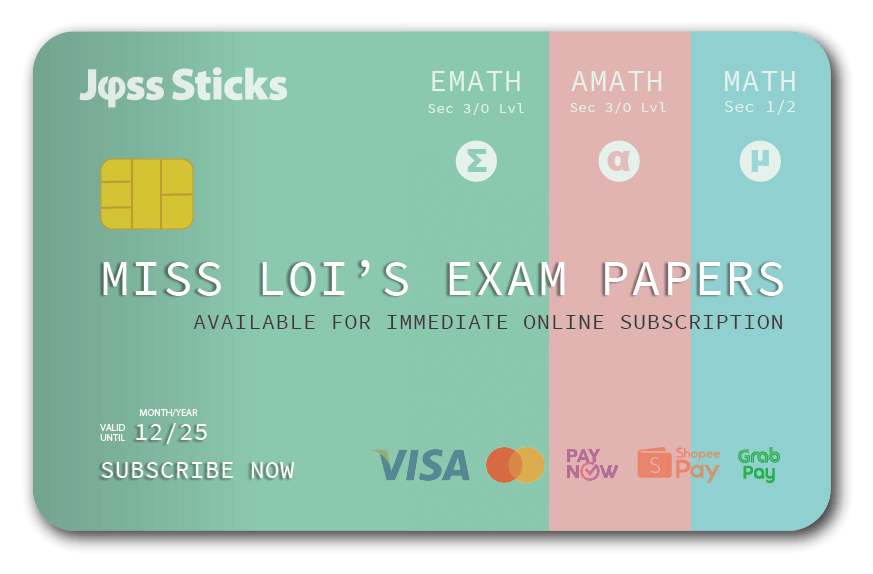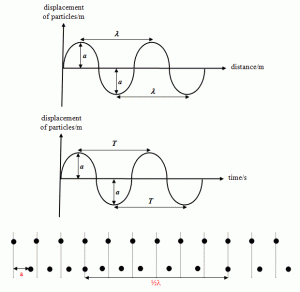As children around the world tonight roam neighbourhoods for candy, students here roam through their notes to prepare for tomorrow’s Physics written Paper 2.
Now that my sister has traditionally disappeared this time of the year to make her phone calls, me and my 师姐 have moved in and taken over a disheveled-looking Temple for Scientific matters.
And so as a Halloween ‘treat’, my 师姐 and I have compiled an exam revision checklist of topics to help you ensure you don’t miss out anything as you prepare for tomorrow’s (i.e. Monday) Physics written Paper 2:
Physics Exam Checklist
Measurement
- Converting these prefixes (p, n, μ, m, c, k, M, G) to numbers
- Reading off the vernier calipers (zero error included)
- Reading off the micrometers screw gauge (zero error included)
Kinematics
Applying the following formulae:
 (when the velocity is constant)
(when the velocity is constant) ,
,  (when there is constant acceleration)
(when there is constant acceleration)
- Interpreting, obtaining data and sketching different types of graphs (distance-time graph, displacement-time graph, speed-time graph, velocity-time graph and acceleration-time graph)
Dynamics
- Using Newton’s 1st Law and Newton’s 3rd Law to answer descriptive questions involving inertia and forces
- Drawing vector diagrams using parallelogram method and tip-to-tail method
- Applying the formula: F = ma
Work, Energy & Power
- State Principle of Conservation of Energy
Applying these formulae
- W = Fs
- Ep = mgh
- Ek =


Moments
- State Principle of Moments
- Solving all 3 types of moment questions
- Questions involving only one pivot – apply principle of moments to solve
- Questions involving two pivots – assume that one pivot is a dummy, apply principle of moments and resolve forces to find the two unknown forces
- Questions involving a force that is inclined at an angle (usually involving tension on a rope) – use sin, cos and tan to calculate the perpendicular distance of the unknown force from the pivot and use principle of moments to solve
Pressure
Applying the formulae
- Reading off the mercury barometer and manometer
Simple Kinetic Molecular Theory
- Using kinetic theory to explain pressure and evaporation
Temperature
- Explain the relationship between the bulb size, thickness of bore and glass wall, thickness of capillary tube with range, sensitivity and responsiveness
Transfer of Thermal Energy
- Explain mechanism of conduction (using key words like molecular vibration in all solids and electron diffusion in metals) and convection (using key words like “being denser, it will sink”, “being less dense, it will rise”, “setting up a convection current”)
Thermal Properties of Matter
Applying the formulae
- Q = Pt
- Q = mcΔθ
- Q = CΔθ
- C = mc
- Q = mlf
- Q = mlv
Reflection of Light
- State the difference between real and virtual image
- Draw ray diagrams involving one mirror and two mirrors placed at 90º to each other
Refraction and Total Internal Reflection
Calculating the refractive index using the following equations


- n = real depth/apparent depth

- Give special emphasis to optical fibres and its applications in everyday life
Lens
- Drawing of lens diagram (especially diagrams involving distant object)
Using the two equations to check for the accuracy of ray diagram drawn
General Wave Properties
- State Transverse Waves and Longitudinal Waves and terms used to describe the two types of waves
Obtaining information like amplitude, wavelength and period from the following diagrams
Electromagnetic Spectrum
- List the different electromagnetic waves in increasing order of wavelengths and frequencies
- State the applications of each type of electromagnetic wave
Sound
- Calculating the speed of sound using both the direct (
 ) and echo method (
) and echo method ( )
) - Obtaining information (pitch and loudness) by interpreting diagrams from a CRO
Electrostatics
- Answering questions using the laws of electrostatics
- Drawing of electric field patterns
Current Electricity & D.C. Circuits
Applying the formulae


- V = IR
- State Ohm’s Law and interpreting the I–V and V–I graphs
- Solving questions involving series and parallel circuits (usually a combination of both types together, to find V, I and/or R)
Practical Electricity
- Explain the function of a fuse and the earth wire
- Understanding what is meant by double insulation
- Connecting the live, neutral & earth wire to a socket, plug, ring mains
Applying correct equations to find effective operating power and power loss
- P = IV
- P = I2R
Magnetism & Electromagnetism
- Drawing of magnetic field patterns for permanent magnets & electromagnets
- Answer questions involving electric bell, loudspeaker and D.C. Circuit (MUST KNOW)
Electromagnetic Induction
- Understanding how an A.C. Generator works (MUST KNOW)
- Explain using Faraday Laws and Lenz’s law, the working principle of a transformer (MUST KNOW)
Applying the formulae

- Efficiency =

Last but not least, for your written Physics paper,
- Read each question carefully.
- Take note of the units given on the diagrams.
- Remember to write the correct units at your final answers.


 (when the velocity is constant)
(when the velocity is constant) ,
,  (when there is constant acceleration)
(when there is constant acceleration)









 )
)



 Miss Loi is a full-time private tutor in Singapore specializing in O-Level Maths tuition. Her life’s calling is to eradicate the terrifying LMBFH Syndrome off the face of this planet. For over years she has been a savior to countless students …
Miss Loi is a full-time private tutor in Singapore specializing in O-Level Maths tuition. Her life’s calling is to eradicate the terrifying LMBFH Syndrome off the face of this planet. For over years she has been a savior to countless students … 




















